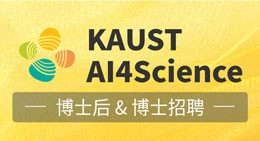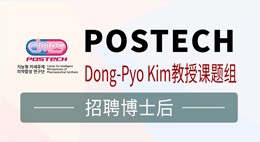-
Named entity recognition for construction documents based on fine-tuning of large language models with low-quality datasets Autom. Constr. (IF 9.6) Pub Date : 2025-03-28
Junyu Zhou, Zhiliang MaNamed Entity Recognition (NER) is a fundamental task for automatically processing and reusing documents. In traditional methods, machine learning has been used relying on costly high-quality datasets. This paper proposed an NER method based on fine-tuning Large Language Models (LLMs) with low-quality datasets for construction documents. Firstly, low-quality datasets were semi-automatically generated
-
BIM, IoT, and GIS integration in construction resource monitoring Autom. Constr. (IF 9.6) Pub Date : 2025-03-28
Xiang Liu, Maxwell Fordjour Antwi-Afari, Jue Li, Yongcheng Zhang, Patrick ManuIn recent years, the advancement of digital technologies such as building information modeling (BIM), internet of things (IoT), and geographic information system (GIS) has had many impacts on the construction industry. However, limited research has been conducted on the integration of BIM, IoT, and GIS technologies, especially in construction resource monitoring. Therefore, this paper presents a state-of-the-art
-
Feature weights in contractor safety performance assessment: Comparative study of expert-driven and analytics-based approaches Autom. Constr. (IF 9.6) Pub Date : 2025-03-28
Say Hong Kam, Tianxiang Lan, Kailai Sun, Yang Miang GohCurrent expert-based approaches to determining the weights of different safety management elements during contractor safety performance are time-consuming and potentially biased.Hence, this paper evaluates analytics-based approaches, i.e., supervised learning, cluster-then-predict and two-level variable weighting K-Means (TWKM) (an extension of the traditional K-Means clustering algorithm), against
-
Real-time bridge disaster management: Enabling technology and application framework Autom. Constr. (IF 9.6) Pub Date : 2025-03-27
Hairong Deng, Haijiang Li, Lueqin Xu, Ali Khudhair, Honghong Song, Yu GaoBridges are susceptible to severe damage from natural disasters, heavy traffic loads, and material degradation, necessitating timely and accurate information for effective emergency response. Current bridge disaster management systems often fail to meet real-time requirements due to interoperability challenges and fragmented functionalities across different phases. This paper systematically reviews
-
3D wireframe model reconstruction of buildings from multi-view images using neural implicit fields Autom. Constr. (IF 9.6) Pub Date : 2025-03-27
Weiwei Fan, Xinyi Liu, Yongjun Zhang, Dong Wei, Haoyu Guo, Dongdong YueThe 3D wireframe model provides concise structural information for building reconstruction. Traditional geometry-based methods are prone to noise or missing data in 3D data. To address these issues, this paper introduces Edge-NeRF, a 3D wireframe reconstruction pipeline using neural implicit fields. By leveraging 2D multi-view images and their edge maps as supervision, it enables self-supervised extraction
-
Local search-based online learning algorithm for shape and cross-section optimization of free-form single-layer reticulated shells Autom. Constr. (IF 9.6) Pub Date : 2025-03-27
Qiang Zeng, Makoto Ohsaki, Kazuki Hayashi, Shaojun Zhu, Xiaonong GuoReasonable shape and cross-section design of free-form Single-Layer Reticulated Shells (SLRSs) are crucial for their superior static performance and material efficiency. However, traditional metaheuristics face high computational costs and are prone to converging to local optima when optimizing these factors simultaneously, often leading to necessity of carrying out decoupled design processes. This
-
Multi-task deep reinforcement learning for dynamic scheduling of large-scale fleets in earthmoving operations Autom. Constr. (IF 9.6) Pub Date : 2025-03-27
Yunuo Zhang, Jun Zhang, Xiaoling Wang, Tuocheng ZengLarge-scale earthwork transportation encounters queuing congestion and dynamic uncertainties, while existing methods ignore complex traffic behaviors and exhibit limited responsiveness and generalization. This paper proposes a multi-task Deep Reinforcement Learning (DRL) framework for the dynamic scheduling of large fleets across supply sites and traffic networks. In the framework, multiple agents
-
Automated UAV image-to-BIM registration for planar and curved building façades using structure-from-motion and 3D surface unwrapping Autom. Constr. (IF 9.6) Pub Date : 2025-03-26
Cheng Zhang, Yang Zou, Feng Wang, Johannes DimyadiTexturing Building Information Model (BIM) with up-to-date Unmanned Aerial Vehicle (UAV) images has brought substantial benefits to building façade inspection. However, current image-to-BIM registration methods are sensitive to UAV positioning accuracy and façade features. Additionally, perspective and geometry distortions on UAV images hinder the texturing of curved façades. To address these issues
-
Bridging cross-domain and cross-resolution gaps for UAV-based pavement crack segmentation Autom. Constr. (IF 9.6) Pub Date : 2025-03-26
Jinhuan Shan, Wei Jiang, Xiao FengThe acquisition of pavement distress images using UAVs presents unique challenges compared to ground-based methods due to differences in camera configurations, flight parameters, and lighting conditions. These factors introduce domain shifts that undermine the generalizability of segmentation models. To address these limitations, an interactive segmentation model, CDCR-ISeg, is proposed to bridge the
-
Multi-scale GAN-driven GPR data inversion for monitoring urban road substructure Autom. Constr. (IF 9.6) Pub Date : 2025-03-26
Feifei Hou, Xingyu Qian, Qiwen Meng, Jian Dong, Fei LyuAccurate monitoring and visualization of urban road substructure and targets are impeded by challenges in inverting Ground Penetrating Radar (GPR) data, especially under multiple inversion objectives and complex road conditions. To address this challenge, a deep learning-based multi-scale inversion approach, termed MSInv-GPR, is proposed, which builds on the Pix2pix Generative Adversarial Network (Pix2pixGAN)
-
Machine learning for generative architectural design: Advancements, opportunities, and challenges Autom. Constr. (IF 9.6) Pub Date : 2025-03-26
Xinwei Zhuang, Pinru Zhu, Allen Yang, Luisa CaldasGenerative design has its roots in the 1990s and has become an intense research topic for bringing the power of artificial intelligence to various aspects of architecture practices. The recent advancements in artificial intelligence have made a methodological shift in innovative approaches to generative design, fueled by the proliferation of big data. This paper provides a comprehensive review of emerging
-
Visual Question Answering-based Referring Expression Segmentation for construction safety analysis Autom. Constr. (IF 9.6) Pub Date : 2025-03-26
Dai Quoc Tran, Armstrong Aboah, Yuntae Jeon, Minh-Truyen Do, Mohamed Abdel-Aty, Minsoo Park, Seunghee ParkDespite advancements in computer vision techniques like object detection and segmentation, a significant gap remains in leveraging these technologies for hazard recognition through natural language processing. To address this gap, this paper proposes VQA-RESCon, an approach that combines Visual Question Answering (VQA) and Referring Expression Segmentation (RES) to enhance construction safety analysis
-
Digital twin-enabled safety monitoring system for seamless worker-robot collaboration in construction Autom. Constr. (IF 9.6) Pub Date : 2025-03-25
Xiao Lin, Ziyang Guo, Xinxiang Jin, Hongling GuoWorker-robot collaboration (WRC) has emerged as a transformative approach to augmenting the productivity of the construction industry. However, the development of a safety monitoring method or system for stopping robot operations in emergency is imperative, especially for seamless WRC on site. This paper presents a digital twin-enabled safety monitoring system for seamless WRC on site, characterized
-
Excavation trajectory planning for unmanned mining electric shovel using B-spline curves and point-by-point incremental strategy under uncertainty Autom. Constr. (IF 9.6) Pub Date : 2025-03-25
Zhengguo Hu, Shibin Lin, Xiuhua Long, Yong Pang, Xiwang He, Xueguan SongThe intelligence of electric shovels plays a critical role in improving excavation efficiency and safety. A key challenge in intelligent excavation is generating an optimal excavation trajectory while considering material uncertainty. Therefore, an Unmanned mining Electric Shovel Trajectory Planning method based on the Point-by-point Incremental B-spline Curve under Uncertainty (UESTP-PIBCU) is proposed
-
Modeling heterogeneous spatiotemporal pavement data for condition prediction and preventive maintenance in digital twin-enabled highway management Autom. Constr. (IF 9.6) Pub Date : 2025-03-25
Linjun Lu, Alix Marie d'Avigneau, Yuandong Pan, Zhaojie Sun, Peihang Luo, Ioannis BrilakisPavement preventive maintenance is one of the most fundamental use cases when deploying digital twins (DTs) for highway infrastructure management. To achieve this, it is essential to accurately predict the pavement conditions in future years. This paper developed a Spatial-Temporal Graph Attention network (STGAT) that can effectively capitalize on both spatial and temporal dependencies while addressing
-
Embedded machine vision sensor with portable imaging device and high durability Autom. Constr. (IF 9.6) Pub Date : 2025-03-24
Pengfei Wu, Han Yuan, Bingchuan Bai, Bo Lu, Weijie Li, Xuefeng ZhaoMachine vision sensors face challenges in automating the monitoring of internal structural damage and deformation, with limited lifespan and resolution accuracy. This paper develops a high-durable machine vision strain sensor, MISS-Silica. The sensor's durability is enhanced through materials, processes, and algorithms, ensuring its lifespan aligns with that of the structure. It combines an endoscope
-
Safety-constrained Deep Reinforcement Learning control for human–robot collaboration in construction Autom. Constr. (IF 9.6) Pub Date : 2025-03-23
Kangkang Duan, Zhengbo ZouWorker safety has become an increasing concern in human–robot collaboration (HRC) due to potential hazards and risks introduced by robots. Deep Reinforcement Learning (DRL) has demonstrated to be efficient in training robots to acquire complex construction skills. However, neural network policies for collision avoidance lack theoretical safety guarantees and face challenges with out-of-distribution
-
Thickness optimisation in 3D printed concrete structures Autom. Constr. (IF 9.6) Pub Date : 2025-03-23
Romain Mesnil, Pedro Sarkis Rosa, Léo DemontLayer pressing in 3D concrete printing (3DCP) allows to continuously modify the thickness of printed laces by changing adequately the robot speed. However, most applications consider a constant thickness throughout the printing and do not leverage all the possibilities from robotic technologies. The aim of this paper is to demonstrate the potential offered by thickness variation to achieve higher structural
-
Integrating text parsing and object detection for automated monitoring of finishing works in construction projects Autom. Constr. (IF 9.6) Pub Date : 2025-03-22
Juseok Oh, Sungkook Hong, Byungjoo Choi, Youngjib Ham, Hyunsoo KimConstruction process monitoring traditionally relies on manual inspections and document cross-referencing, leading to inefficiencies in project management. Despite advances enabling computer vision-based monitoring and automated document analysis, integrating these technologies remains challenging, particularly in connecting field data with work documentation. This paper proposes an automated monitoring
-
Damage assessment of modular integrated construction during transport and assembly using a hybrid CNN–Gated recurrent unit model Autom. Constr. (IF 9.6) Pub Date : 2025-03-22
Husnain Arshad, Tarek Zayed, Beenish Bakhtawar, Anthony Chen, Heng LiModular integrated construction (MiC) offers improved sustainability and automation. Nevertheless, its performance is impeded by extensive logistics operations, including multimode transportation, recurring loading-unloading, stacking, and assembly. Such rigorous operations may cause inadvertent underlying damage to module structure, leading to supply chain disruptions, safety hazards and structural
-
Automated region extraction and displacement detection for paving blocks adjacent to deep excavation using photogrammetry Autom. Constr. (IF 9.6) Pub Date : 2025-03-22
Jung Woo Kim, Jinman Jung, Taesik KimConstruction projects in urban environments often involve deep excavations, leading to ground deformations, such as settlement or uplift, which can harm nearby infrastructure. Monitoring is crucial for ensuring stability and safety because the displacement of paving blocks can indicate subsurface deformation. Traditional methods, like using settlement markers and leveling devices, only measure specific
-
Common data environment for digital twins from building to city levels Autom. Constr. (IF 9.6) Pub Date : 2025-03-21
Jiayi Yan, Qiuchen Lu, Nan Li, Long Chen, Michael PittDigital twin (DT) technology is pivotal for advancing sustainable, liveable, and resilient smart cities. As DTs scale from building to infrastructure and city levels, data management remains a key challenge due to increasing data heterogeneity. This paper addresses this gap by defining a common data environment (CDE) that connects physical and virtual spaces with three enablers: data sources, data
-
Hyperbolic fuzzy set decision framework for construction contracts integrating CRITIC and WASPAS for dispute mitigation Autom. Constr. (IF 9.6) Pub Date : 2025-03-20
Edmundas Kazimieras Zavadskas, Raghunathan Krishankumar, Kattur Soundarapandian Ravichandran, Arvydas Vilkonis, Jurgita AntuchevicieneThe paper attempts to mitigate disputes during drafting of a construction contract by presenting a decision framework. The research questions considered are to set the main criteria involved and their relative importance in contract clauses selection and evaluate the priority of different contract clauses. In response, the paper presents an integrated framework involving hyperbolic fuzzy data, CRiteria
-
Topology-informed deep learning for pavement crack detection: Preserving consistent crack structure and connectivity Autom. Constr. (IF 9.6) Pub Date : 2025-03-20
Jiayv Jing, Ling Ding, Xu Yang, Xu Feng, Jinchao Guan, Hong Han, Hainian WangThis paper addresses the challenge of crack detection, where incorrect connections often distort crack topology. By leveraging topology theory, which focuses on properties that remain invariant under continuous transformations, the goal is to preserve key geometric features like connectivity and loops. For future-oriented road maintenance, fine segmentation that preserves the topological integrity
-
Automated residential layout generation and editing using natural language and images Autom. Constr. (IF 9.6) Pub Date : 2025-03-19
Pengyu Zeng, Wen Gao, Jizhizi Li, Jun Yin, Jiling Chen, Shuai LuArchitectural design, including for the most common residential buildings, is a complex process that typically requires iterative revisions by skilled architects. This paper addresses how to automate the generation and modification of residential layouts, to lower the design threshold and enable cost-effective, user-driven generation and editing. This paper proposes Text2FloorEdit, a framework that
-
Tunnel location optimization for railway alignment design in complex mountainous regions Autom. Constr. (IF 9.6) Pub Date : 2025-03-19
Xinjie Wan, Hao Pu, Paul Schonfeld, Yang Ran, Taoran Song, Wei Li, Jianping HuIn complex mountainous regions, optimizing continuous tunnel locations for railways presents significant challenges. To address this, a tunnel location optimization model is developed, incorporating key factors such as construction cost, structural stability, and alignment coherence. In this model, specific design variables and constraints for tunnel portals and bodies are also formulated. Then, a
-
Automating inspection data from bridge management system into bridge information model Autom. Constr. (IF 9.6) Pub Date : 2025-03-18
Carlos Santos, Furkan Luleci, João Amado, José C. Matos, F. Necati CatbasThis paper presents an approach to enhance the implementation of the Bridge Information Modeling (BrIM) methodology during the operational stage by automating the integration of inspection data from Bridge Management Systems (BMS) into BrIM models. While the data from BMS is available and retrievable from spreadsheets, the 3D bridge model is represented according to the Industry Foundation Classes
-
Monitoring concrete pouring progress using knowledge graph-enhanced computer vision Autom. Constr. (IF 9.6) Pub Date : 2025-03-18
Fabian Pfitzner, Songbo Hu, Alexander Braun, André Borrmann, Yihai FangAccurate progress measurement in concrete pouring is essential to prevent project delays and material waste. This paper introduces a knowledge graph (KG)-enhanced computer vision (CV) method to improve the accuracy and generalizability of traditional methods used in concrete pouring monitoring, which often struggle to integrate contextual data. By combining object detection and extracting information
-
Reference architecture and ontology framework for digital twin construction Autom. Constr. (IF 9.6) Pub Date : 2025-03-15
Jonas Schlenger, Kacper Pluta, Alwyn Mathew, Timson Yeung, Rafael Sacks, André BorrmannThe application of digital twins in building construction faces challenges due to limited guidance on the necessary data management layers. This paper addresses this gap by investigating how the reference architecture for Digital Twin Construction (DTC) should be structured to manage planning information, raw monitoring data, and derived knowledge, as well as its data schema to compare project plans
-
Performance-based payment mechanism for common data environment (CDE) adoption in construction projects Autom. Constr. (IF 9.6) Pub Date : 2025-03-15
Ron C.W. Ng, Jack C.P. Cheng, George C.W. Cheng, Ka Hang Fung, Chun Wai FongThe construction industry is undergoing a digital transformation in which Common Data Environment (CDE) is one of the digitalization technologies driving this transformation. A CDE consists of workflows and solutions mentioned in international standards and appears to become an essential requirement in construction projects which leads to transforming more traditional practice projects to projects
-
Machine learning applications in designing cementitious materials Autom. Constr. (IF 9.6) Pub Date : 2025-03-14
Shichen Dang, Hu Fang, Yao YaoThis review explores the development and application of machine learning (ML) algorithms in cementitious materials, and some highlighting and potential ML-related applications are emphasized. This review takes the commonly employed ML algorithms and training strategies as clues, and it covers commonly used ML models, including Neural Networks based (NN-based) algorithms and Classification and Regression
-
Text-to-structure interpretation of user requests in BIM interaction Autom. Constr. (IF 9.6) Pub Date : 2025-03-14
Yinyi Wei, Xiao Li, Frank PetzoldNumerous efforts have been devoted to utilizing a natural language-based interface for BIM interaction. These interfaces require extracting user's intent (i.e., the operation type) and slots (i.e., the targeted elements and properties). However, there is a lack of a fine-grained approach for extracting intent and slot information simultaneously. This paper introduces a text-to-structure approach based
-
Domain knowledge-driven image captioning for bridge damage description generation Autom. Constr. (IF 9.6) Pub Date : 2025-03-14
Chengzhang Chai, Yan Gao, Guanyu Xiong, Jiucai Liu, Haijiang LiDeep learning-based bridge visual inspection often produces limited outputs, lacking the accurate descriptions required for practical assessments. Researchers have explored multimodal approaches to generate damage descriptions, but existing models are prone to hallucination and face challenges related to feature representation sufficiency, attention mechanism flexibility, and domain-specific knowledge
-
Graph-based change detection of pavement cracks Autom. Constr. (IF 9.6) Pub Date : 2025-03-14
Yibo Zhou, Yuchun Huang, Qi Chen, Dongchen YangPavement crack deterioration threatens road safety, but current maintenance strategies rely on composite indicators that lack crack location and attribute changes, failing to accurately track deterioration. Traditional feature-point-based methods struggle with temporal crack correspondence due to noise and shape variability. However, local structural features like intersections and inflection points
-
Automated measurement of asphalt pavement rut depth using smartphone imaging Autom. Constr. (IF 9.6) Pub Date : 2025-03-13
Zhenqiang Han, Jiaqi Tang, Liqun Hu, Wei Jiang, Aimin ShaFast and accurate rutting distress detection is essential for driving safety and advancing pavement maintenance automation. However, existing Rut Depth (RD) measurement methods are often inefficient or costly due to complex pavement conditions and expensive equipment. This paper introduces a method to identify and measure RD using smartphone photography and neural networks. Accelerated Pavement Tests
-
Dynamic robotic bricklaying force-position control considering mortar dynamics for enhanced consistency Autom. Constr. (IF 9.6) Pub Date : 2025-03-13
Yi Zhou, Bowen Huang, Boge Dong, Yi Wen, Molong DuanWith growing construction automation needs and aging workforce, robotic bricklaying technologies offer promising solutions by replacing labor-intensive manual wall construction. Despite advances in mechatronics, trajectory generation, and adhesive bonding, bricklaying process consistency still remains a major issue, challenged by nonlinear mortar dynamics, variable thickness, and lack of force-position
-
Enhancing worker monitoring and management on large-scale construction sites with UAVs and digital twin modeling Autom. Constr. (IF 9.6) Pub Date : 2025-03-12
Mingqiao Han, Jihan Zhang, Yijun Huang, Jiwen Xu, Xi Chen, Ben M. ChenMonitoring large-scale work sites is challenging, particularly in vast outdoor areas. Unmanned aerial vehicles (UAVs) provide an effective solution for site monitoring and worker management. This paper introduces a UAV-based framework integrated with digital twin (DT) modeling to enhance real-time data management and worker authorization verification. The pretrained YOLO-LCA model improved detection
-
Integrated algorithm for identifying failure modes and assessing reliability of concrete-filled steel tubes under lateral impact Autom. Constr. (IF 9.6) Pub Date : 2025-03-11
Nan Xu, Yanhui LiuConcrete-filled steel tube (CFST) columns are susceptible to transverse impact and catastrophic fracture failure might trigger progressive collapse of entire buildings. This paper aims to predict CFST failure modes (bending deformation, crack and fracture) and conduct reliability evaluation implementing intelligent algorithms. Fixed-supported CFST impact samples were gathered, which contain 10 inputs
-
Intelligent detection of bonding status in external building insulation layers using ground-penetrating radar Autom. Constr. (IF 9.6) Pub Date : 2025-03-11
Yuhan Li, Xiaopeng Yang, Junbo Gong, Jian Wang, Zihang Jiang, Tian LanThe bonding status of external building insulation layer is crucial for thermal insulation and long-term safety, but existing detection methods lack efficiency and accuracy. This paper explores the use of Ground-Penetrating Radar (GPR) technology for accurately estimating bonding areas and precisely identifying top and subgrade debonding defects in external building insulation layers. It proposes an
-
Dataset and benchmark for as-built BIM reconstruction from real-world point cloud Autom. Constr. (IF 9.6) Pub Date : 2025-03-11
Yudong Liu, Han Huang, Ge Gao, Ziyi Ke, Shengtao Li, Ming GuAs-built BIM reconstruction plays a significant role in urban renewal and building digitization but currently faces challenges of low efficiency. Scan-to-BIM aims to improve reconstruction efficiency but lacks domain-specific, large-scale datasets and accurate, multi-dimensional benchmark metrics. These deficiencies further impede the evaluation and training of scan-to-BIM methods. To address these
-
Estimating track geometry irregularities from in-service train accelerations using deep learning Autom. Constr. (IF 9.6) Pub Date : 2025-03-10
Zihao Jin, Wei Zhang, Zhen-Yu Yin, Ning Zhang, Xueyu GengTimely identification of Track Geometry Irregularities (TGIs) is essential for ensuring the safety and comfort of high-speed rail operations. Existing inspection methods rely on costly Track Recording Vehicles (TRVs) and manual trolleys, resulting in infrequent and expensive inspections. This paper proposes a data-driven approach for estimating TGIs using a Convolutional Neural Network with Multi-Head
-
Large language model-empowered paradigm for automated geotechnical site planning and geological characterization Autom. Constr. (IF 9.6) Pub Date : 2025-03-09
Zehang Qian, Chao ShiA sound site investigation scheme must satisfy requirements of various local, regional, or national codes, and it is imperative to have an efficient system for information retrieval, summarization, and reasoning along with a rapid interpretation tool for real-time risk-informed decision-making. Emerging large language models (LLMs) offer a promising solution for automatically processing unstructured
-
Automated analysis system for micro-defects in 3D printed concrete Autom. Constr. (IF 9.6) Pub Date : 2025-03-08
Hongyu Zhao, Xiangyu Wang, Junbo Sun, Fei Wu, Xianda Liu, Zhaohui Chen, Yufei WangThe internal micro-defects of 3D printed concrete (3DPC) play a pivotal role in influencing its mechanical properties. Nonetheless, the acquisition of representative internal micro-defect information is hindered by computational inefficiencies and quantification limitations of the current equipment system. This paper proposes a deep learning based system to assist SEM equipment in automatically quantifying
-
BIM-driven software and algorithm for optimal floor tile layout minimizing material waste Autom. Constr. (IF 9.6) Pub Date : 2025-03-07
Faruk Ergen, Önder Halis BettemirState-of-the-art BIM software cannot provide effective solutions for tile placement across spaces due to inaccurate quantity take-off (QTO), internal obstacle recognition, and 3D visualization. This prevents minimizing the waste material of floor covering. In this paper, BIM-based software is developed to establish semantic relationships between the covered surface and the room's structural and architectural
-
Digitizing contract administration via electroencephalography: Exploring the brain-behavior link in contract clause review Autom. Constr. (IF 9.6) Pub Date : 2025-03-07
Xinyan Wei, Pin-Chao Liao, Heap-Yih ChongDigital transformation in contract administration seeks to improve efficiency and transparency, yet cognitive biases in contract interpretation remain unresolved. This paper investigates how stakeholders' professional expertise shapes their cognitive and behavioral responses to contract terms, particularly for the main contractor's obligations or liabilities. A controlled experiment was designed to
-
Taxonomic framework for neural network-based anomaly detection in bridge monitoring Autom. Constr. (IF 9.6) Pub Date : 2025-03-06
Imane Bayane, John Leander, Raid KaroumiAccurate differentiation between damage-related anomalies and data errors is a critical challenge in bridge monitoring. This paper presents a data-driven framework for anomaly detection and classification, addressing the question: How can anomalies be classified in multi-sensor bridge monitoring to distinguish structural changes from noise? The framework combines an adapted anomaly taxonomy with a
-
Mechanics-based digital twin model for structural construction using 3D scanning and FE model updating Autom. Constr. (IF 9.6) Pub Date : 2025-03-06
Jian-Sheng Fan, Mu-Nan Xu, Yan-Chang Li, Yi-Fan Ding, Yu-Fei Liu, Bin Geng, Xin-Jun LiaoConstruction control of large-span spatial steel structures faces significant challenges, particularly during the transition from partition assembly to structural closure. Factors such as component cutting errors, splicing inaccuracies, and temperature-induced deformations further complicate this process. Traditional deformation control relies on forward calculations based on design models and cannot
-
Optimized crane mat design and transit path planning using a graph search algorithm Autom. Constr. (IF 9.6) Pub Date : 2025-03-06
Monjurul Hasan, Ming LuDesigning temporary crane transit paths in large construction sites with varying geological profiles presents two challenges: (1) ensuring safe, efficient, and cost-effective operations, and (2) developing optimization solutions that consider material properties, ground loading, and site layout. This paper addresses these challenges by integrating a graph search algorithm with crane mat structural
-
Deep learning for named entity recognition in extracting critical information from struck-by accidents in construction Autom. Constr. (IF 9.6) Pub Date : 2025-03-06
Zhipeng Zhou, Lixuan Wei, Haiying LuanAutomatic extraction of critical information from accident reports is helpful for mitigating and controlling hazards. This paper focuses on struck-by accidents in construction and describes the process of extracting information through named entity recognition (NER). Seven entity types were identified, including accident, person, equipment, location, injured area, injured condition, and fatality. Deep
-
Data-driven multi-objective prediction and optimization of construction productivity and energy consumption in cutter suction dredging Autom. Constr. (IF 9.6) Pub Date : 2025-03-06
Yong Chen, Qiubing Ren, Mingchao Li, Huijing Tian, Liang Qin, Dianchun WuIn dredging construction, cutter suction dredger (CSD) operation typically relies on manual experience with suboptimal control parameters, which can easily lead to low productivity and high energy consumption. This paper presents an intelligent decision-making approach for optimizing CSD control parameters based on multi-objective optimization (MOO). It employs high-dimensional feature selection techniques
-
Remotely operated vehicle (ROV) underwater vision-based micro-crack inspection for concrete dams using a customizable CNN framework Autom. Constr. (IF 9.6) Pub Date : 2025-03-06
Hao Liu, Jingyue Yuan, Qiubing Ren, Mingchao Li, Zhiyong Qi, Xufang DengTimely and accurate underwater structural inspection is crucial for ensuring the service ability of concrete dams. However, due to the harsh and complex environments, most in-air crack detection methods are not suitable. This paper presents an end-to-end underwater micro-crack detection framework based on customizable convolutional neural networks. First, customized model, UENet, is constructed based
-
BIM-based semantic enrichment and knowledge graph generation via geometric relation checking Autom. Constr. (IF 9.6) Pub Date : 2025-03-05
Georgios Nektarios Lilis, Meng Wang, Kyriakos Katsigarakis, Dimitrios Mavrokapnidis, Ivan Korolija, Rovas DimitriosBuilding Information Models support information exchange and collaboration between designers, engineers and stakeholders of the built environment. Due to the large scale and multi-domain requirements of building projects, building information is often fragmented to multiple files, prone to modeling errors and poor level of detail. As a result, BIM data cannot be reused and remain siloed across the
-
Inner wall defect detection in oil and gas pipelines using point cloud data segmentation Autom. Constr. (IF 9.6) Pub Date : 2025-03-04
Zhouyu Yan, Hong ZhaoInner wall defects in oil and gas pipelines threaten operational safety. Traditional manual detection is vague and risky. Laser scanning technology offers precise point cloud data for accurate characterization of the inner wall. However, the pipeline's quasi-cylinder model and complex defects complicate detection. This paper proposes a method for defect detection using point cloud data segmentation
-
Construction site hazard recognition via mobile immersive virtual reality and eye tracking Autom. Constr. (IF 9.6) Pub Date : 2025-03-04
Bekir Enes Özel, Mehmet Koray PekeriçliThe perilousness of construction sites is well-known. The need for competent safety management is apparent as well. Although hazard recognition is crucial for safety management, studies show an alarmingly high portion of hazards are unrecognized in construction sites. This situation indicates that better methods are required to understand the process of hazard recognition more profoundly and to measure
-
Drone-based bridge inspections: Current practices and future directions Autom. Constr. (IF 9.6) Pub Date : 2025-03-03
Tommaso Panigati, Mattia Zini, Domenico Striccoli, Pier Francesco Giordano, Daniel Tonelli, Maria Pina Limongelli, Daniele ZontaAs transportation infrastructure networks continue to age, bridges have become critical components requiring monitoring activities to ensure safety and functionality. Inspections and Structural Health Monitoring (SHM) play a vital role in aiding decision-makers in maintaining structural integrity. Drones have gained popularity for bridge inspections because they offer enhanced safety, efficiency, and
-
Deep learning-based automated method for enhancing excavator activity recognition in far-field construction site surveillance videos Autom. Constr. (IF 9.6) Pub Date : 2025-03-01
Yejin Shin, Seungwon Seo, Choongwan KooVision-based classifiers, highly sensitive to camera placement, face significant challenges under far-field conditions at construction sites. To address these challenges, this paper proposes a deep learning-based method for enhancing excavator activity recognition using a 3D Residual Neural Network (3D ResNet) classifier with transfer learning. Machine learning-based SHapley Additive exPlanations (SHAP)
-
Latent normal images-based zero-negative sample rail surface defect segmentation method Autom. Constr. (IF 9.6) Pub Date : 2025-03-01
Bin Yan, Fan Yang, Shi Qiu, Jin Wang, Lei Xu, Weidong Wang, Jun PengRail surface defects pose a significant risk to the safe operation of railways, making rapid and accurate detection essential. However, existing deep learning-based detection methods struggle to identify all potential defects that may occur during operation due to imbalanced sample, which limits practical application in railway maintenance. To address this, a latent normal images-based zero-negative
-
Image-based scan-to-BIM for interior building component reconstruction Autom. Constr. (IF 9.6) Pub Date : 2025-03-01
Mun On Wong, Yifeng Sun, Huaquan Ying, Mengtian Yin, Hui Zhou, Ioannis Brilakis, Tom Kelly, Chi Chiu LamImage-based scan-to-BIM is a cost-effective and accessible solution for generating digital models of real-world environments. However, its indoor application remains challenging due to cluttered occlusions, complex geometries, and various surfaces. This paper develops a photogrammetry and instance segmentation-integrated approach for image-based interior building component reconstruction. Specifically
-
Embedded visualizations in crane operation user interfaces for real-time assistance Autom. Constr. (IF 9.6) Pub Date : 2025-02-28
Jiantsen Goh, Yihai Fang, Barrett EnsWhile crane operations are becoming increasingly complex, challenges remain in creating user interfaces (UIs) that effectively support real-time decision-making and situational awareness. This paper presents a comprehensive review and evaluation of visualizations used in crane operations, focusing on user interfaces designed to enhance operator performance and safety during lifts. Through a systematic
-
Land surveying with UAV photogrammetry and LiDAR for optimal building planning Autom. Constr. (IF 9.6) Pub Date : 2025-02-27
Paul Sestras, Gheorghe Badea, Ana Cornelia Badea, Tudor Salagean, Sanda Roșca, Shuraik Kader, Fabio RemondinoAccurate land surveys are fundamental for optimal building planning, as topography bridges architecture and landscape. This paper proposes a Digital Feature Model (DFM) that integrates UAV photogrammetry and LiDAR data to optimize terrain mapping. UAV photogrammetry provides high-accuracy mapping of textured anthropic surfaces, while LiDAR excels in penetrating vegetation-covered areas. By segmenting

































 京公网安备 11010802027423号
京公网安备 11010802027423号